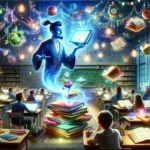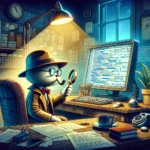In an age where the line between inspiration and imitation blurs faster than a cheetah on a caffeine spree, the quest for originality has never been more paramount. Enter the arena, our digital Sherlock Holmes—ChatGPT, equipped with the magnifying glass of artificial intelligence, ready to sniff out the subtlest scents of plagiarism and AI-generated content. But how, you ask, can this virtual detective aid in the quest for the holy grail of originality? Buckle up, dear reader, for a journey into the heart of creativity’s defense.
Firstly, understanding the capabilities of ChatGPT is akin to knowing the tools in your detective kit. Imagine ChatGPT as your sidekick in the battle against the copy-paste dragons, equipped not with swords and shields but with algorithms and databases. But fear not, for this sidekick doesn’t speak in codes and riddles. Instead, it offers a user-friendly interface where you can paste your text and ask, “Dear ChatGPT, is this masterpiece my own, or have I unknowingly summoned the spirits of texts past?”
Now, onto the tactics. The trick lies not in asking ChatGPT to simply identify plagiarism—that would be too easy, and our digital detective loves a challenge. Instead, engage it in a conversation about the text. Ask it to provide summaries, question its understanding, or even inquire if it knows of similar works. ChatGPT, with its vast knowledge base, might reveal sources that echo too closely to the text in question, thus lighting the first beacon of suspicion.
But what about AI-generated content? Ah, that’s where the plot thickens. In this digital age, the pen is mightier if it’s powered by AI, but so is the ability to detect its brethren. To uncover if a piece of writing has been birthed by artificial intellect, one must become a bit of a linguist. Question ChatGPT on the stylistic and structural elements of the text. AI, for all its brilliance, often follows patterns that a keen digital detective can identify. Look for overly formal tones, a lack of personal touch, or an abundance of unnecessary complexity—tell-tale signs of a machine at work.
But remember, dear investigator, with great power comes great responsibility. Use ChatGPT not as a blunt instrument to accuse and condemn but as a scalpel, finely dissecting texts to understand their origins. Approach each investigation with an open mind, for in the realm of creativity, inspiration can come from the most unexpected places.
Engage ChatGPT in dialogue, challenge it, play the devil’s advocate, and soon, you’ll find that you’re not just a user but a co-detective in the pursuit of originality. Together, you’ll navigate the murky waters of content creation, where the only true crime is not striving for authenticity.
In conclusion, let ChatGPT be your guide, your mentor, and your partner in the eternal dance of creativity versus imitation. Embrace this tool not as a watchdog but as a companion in your creative endeavors. With ChatGPT by your side, embark on a quest not just to detect plagiarism or AI usage but to champion the cause of originality in a world teeming with echoes.
So, dear reader, as you stand at the crossroads of inspiration and integrity, remember that you hold in your hands a key to unlocking the treasure chest of true creativity. Let “The Plagiarism Detective” be not just a title but a badge of honor, a testament to your commitment to the art of originality. And let ChatGPT be your steadfast companion, guiding you through the fog of doubt towards the clear skies of genuine creation.










